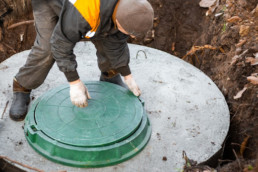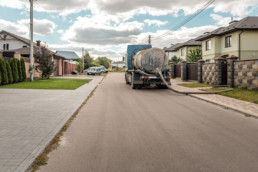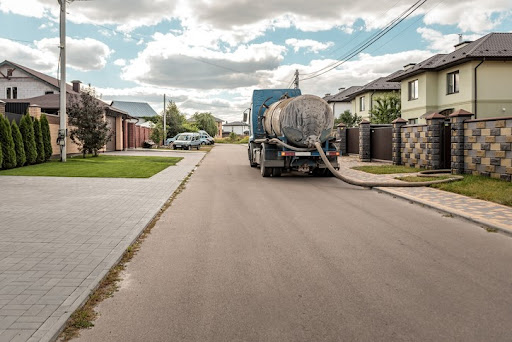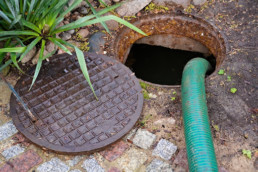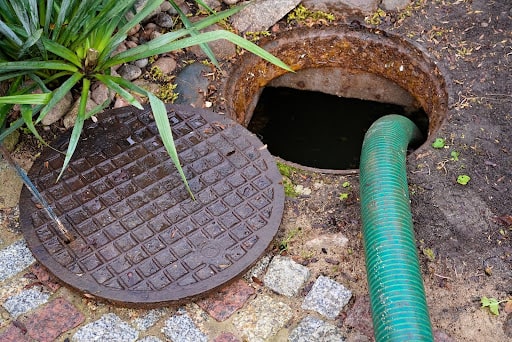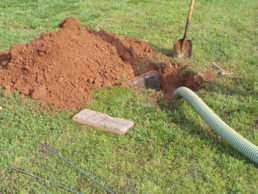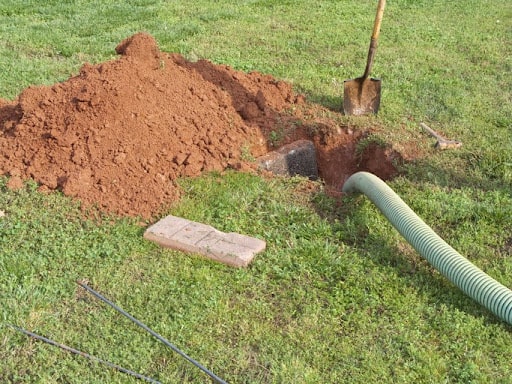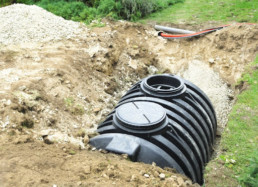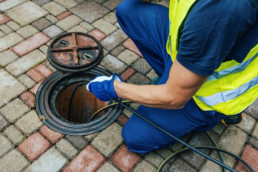6 Common Issues Uncovered During Septic Inspections and How to Address Them
Septic inspections are vital for ensuring your sewage treatment system is operating properly. Since the tank is buried underground, it’s easy to overlook the need for septic inspections. However, routine visits from a septic service provider help you discover small issues so you can repair them before they lead to a sewage backup or other emergency. Learn about the most common issues uncovered during septic inspections and how to address them.

Blockages in the Drain Field
The drain field is a crucial septic system component that filters wastewater before releasing it into the soil. Over time, solid waste and other debris can accumulate in the drain field, leading to blockages that prevent water from draining properly. This can cause sewage backups and unpleasant odors in your home. Drain field blockages can often be resolved through professional cleaning or by installing new drain field lines.
Leaking Tank or Pipes
These septic system problems can lead to groundwater contamination and pose a health hazard to your family and neighbors. During a septic inspection, the technician will look for signs of leaks, such as wet spots or odors around the tank or pipes. If a leak is detected, address it immediately to prevent further damage. Leak repair is often possible, but severe cases may require you to replace the damaged components.
Excessive Solids in the Tank
Septic tanks separate solids from liquids, storing them for eventual disposal. Over time, solid waste can build up in the tank, reducing its capacity to manage liquid waste. If the crew detects this problem while measuring solids in the tank, they may recommend pumping immediately to prevent backups or overflows and extend the life of your septic system.
Tree Root Intrusion
Tree roots can infiltrate septic tanks and pipes, causing blockages and leaks. Your technician will look for signs of root intrusion during the inspection, such as cracks in the tank or pipes, and recommend appropriate action. This may include removing nearby trees or installing root barriers to prevent further infiltration.
Damaged Baffles
Baffles are partitions inside the septic tank that help separate solids from liquids and prevent debris from entering the drain field. These components can deteriorate over time, leading to system failures, so it’s important to check their condition during a septic inspection.
Improper System Design or Installation
If your septic system is designed or installed poorly, it may fail prematurely. This is why a septic inspection should include ensuring the tank meets local health and safety regulations. If the inspector finds any issues, they may recommend certain system modifications or repairs.
Is it time for your next septic inspection? Trinity Liquid Waste can ensure a job well done. Our trained and licensed technicians will thoroughly check the crucial components of your septic system to identify any wear, damage, or other issues that could affect performance. We also offer septic pumping, septic repair, and more, making us your one-stop shop for septic services in the San Francisco Bay Area. For more information or to request a visit, please call us at 510-874-6489 or contact us online.
Maintain a Healthy Septic System with Regular Septic Inspections
Regular septic inspections are the key to maintaining a healthy, efficient, and long-lasting septic system. Simple preventative visits are just what you need to avoid plumbing problems and save money on premature septic repairs and replacements. Learn more about the main types of septic inspections, when to schedule this service, and the benefits of inspecting your septic system regularly.
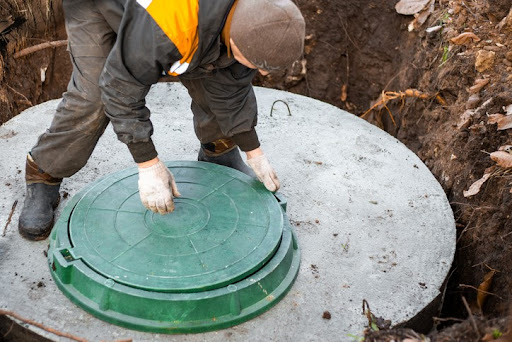
Types of Septic Inspections
Septic system inspections can be classified into two types:
- Visual inspections identify potential issues that can be spotted easily, such as the level of solids, signs of leakage, and the overall condition of the tank.
- Full system inspections involve a more comprehensive assessment that includes measuring the level of sludge and scum, checking the drain field, and examining the distribution pipes to determine efficiency and identify any underlying issues.
When to Schedule a Septic Inspection
Three common situations warrant scheduling a septic inspection:
- Every three years: The Environmental Protection Agency (EPA) recommends pumping your septic tank every three to five years. A septic inspection at the three-year mark may reveal that it’s time to pump, or you may learn you can wait another year or two for this service.
- When buying or selling a house with a septic system: Whether you’re the buyer or seller, septic inspections are recommended to verify the system’s condition and identify any potential issues that could impact the sale.
- If you notice septic tank problems: Have you started noticing slow drains, gurgling sounds, or foul odors? Schedule a septic inspection promptly to avoid a full-scale sewer backup.
Benefits of Septic Inspections
Make this preventative service a priority to enjoy these benefits:
- Find and fix small problems: Early detection is the most cost-effective way to deal with septic tank problems. Only regular inspections can identify developing issues so you can repair them before costly and inconvenient system failures occur.
- Address system performance issues: Are you getting the most from your septic tank? An inspection can uncover performance issues and determine whether the system is operating at full capacity.
- Know when to pump: Your technician can inform you when it’s time to pump the septic tank based on the level of solids inside. This way, you’re not left guessing when to schedule this important service.
- Protect your home’s value and appeal to buyers: Aim to present an inspection report to potential homebuyers demonstrating that your septic system is fully functional and meets local health and safety regulations. This shows your commitment to septic system care and increases the likelihood of a fast, uncomplicated home sale.
Choose Trinity Liquid Waste for your next septic inspection, septic pumping, septic repair, or other plumbing-related services. Our trained and licensed technicians will thoroughly check the crucial components of your system to identify any wear, damage, or other issues that could affect performance. We draw on over 25 years of experience serving residential and commercial customers in the San Francisco Bay Area. For more information or to request a visit, please call us at 510-874-6489 or contact us online.
Septic Tank Pumping: How It Works and What to Expect?
A well-designed and properly installed septic tank can last for decades—or it can fail in just a few years. It all depends on whether you prioritize septic tank inspections and maintenance.
Routine septic pumping is one of the most important parts of maintaining your septic system. The Environmental Protection Agency (EPA) recommends doing this every three to five years based on the size of your household, how much wastewater you generate, the volume of solids in your wastewater, and the septic tank size. But what does septic pumping entail? Take a closer look at how this process works and what to expect.
Step 1: Open the Septic Tank Access Lid
The first step is to locate and access the septic tank. The access lid is usually located near the home’s main sewer line and may be buried under six to 12 inches of soil. If needed, your service provider may use a metal detector to locate the lid.
Once found, crew members carefully remove the access lid. They also inspect it for corrosion, cracks, or other damage that could warrant a replacement.
Step 2: Pump Out the Tank
The next step is to pump the tank using a high-powered hose connected to a vacuum truck. This sucks out solid waste, liquid, and scum and pumps it into the truck’s holding tank. Removing as much accumulated waste as possible is important to prevent blockages and backups in the septic system.
Step 3: Clean the Tank
Your service provider now cleans the tank using high-pressure water to remove any remaining debris or build-up. Septic tank cleaning is crucial to maintain system efficiency and prevent future problems.
Step 4: Conduct a Visual Inspection
Next, the crew visually inspects the tank’s interior and exterior, checking for any cracks, leaks, or other damage that could affect functionality. Your contractor may recommend repairs or replacements if they find any problems during this inspection.
Step 5: Close and Rebury the Lid
When the inspection is complete, the crew replaces the access lid and reburies it. You may request a riser installation to lift the lid above ground level for easier access during future upkeep. Your service provider should ensure the area is clean and tidy before driving away.
Step 6: Dispose of Scum and Sludge
The final step in the septic tank pumping process is to discard the scum and sludge in a proper and environmentally safe manner. Waste is usually taken to a treatment facility for processing and disposal according to local regulations.
Hiring a professional septic tank pumping company ensures the process outlined above is performed correctly and efficiently. Turn to Trinity Liquid Waste for a job well done. Our family-owned business has over 25 years of experience serving residential and commercial customers in the San Francisco Bay Area. We specialize in septic pumping, septic inspections, septic repairs, and other plumbing-related services. Whether you need a routine visit or an emergency response, we have you covered! To schedule septic services with us, please call 510-874-6489 or contact us online.
How to Choose a Septic Tank Pumping Professional?
More than 21 million American households use septic tanks to hold, treat, and disperse their domestic wastewater. When used correctly, septic systems are highly effective and reliable. Still, routine septic tank pumping and maintenance are required to keep the system flowing smoothly. If you recently bought a property with a septic system, you’ll want to partner with a reliable contractor that can meet all your septic needs for years to come. Here’s how to choose a professional you can trust.
Licenses and Insurance
Choosing a licensed and insured septic tank pumping company is essential. Licensing requirements vary by state. In California, septic service providers must pass the Sanitation System and business exams to obtain a California Sanitation System contractor license.
A license proves the company is legitimate, with technicians who have received proper training and understand the best practices for pumping and maintaining septic tanks. Insurance is also important because it protects you from financial liability if something goes wrong during the pumping process.
Knowledge and Experience
A septic pumping company with years of experience has likely seen situations similar to yours before, making them better able to deliver exceptional services. The company should also be familiar with regulations or restrictions in your area that could affect septic tank pumping.
Services Rendered
Even the most reputable septic company is no good to you if they don’t offer the services you’re looking for. Whether you require routine pumping and maintenance, septic inspections, drain field repairs, or emergency services, make sure the professional you choose can meet your specific needs.
Approach to Septic Cleaning and Waste Disposal
Septic tank pumping may require removing scum and sludge from the system. Your contractor should have a clear plan for cleaning the tank and discarding the resulting waste. Choose a professional that follows proper disposal procedures and is committed to protecting the environment.
Customer Reviews and References
A company’s reputation is another important factor to consider. Read online reviews to get an idea of the customer service, timeliness, work ethic, and reliability you can expect. If you find a contractor you like, you can also ask them for references that you can contact directly. A septic service provider with a good reputation is more likely to leave you satisfied with a job well done.
Pricing
Finally, consider the prices offered by septic contractors in your area. Call several companies to request quotes for routine services before settling on one provider or another. However, keep in mind that the cheapest option isn’t always the best. Consider the other factors mentioned above, along with the estimates you receive, rather than basing your decision solely on the price.
Trinity Liquid Waste is a family-owned business with over 25 years of experience serving residential and commercial customers in the San Francisco Bay Area. We specialize in septic pumping, septic inspections, septic repairs, and other plumbing-related services, with routine visits and emergency response available. For more information or to schedule septic services with us, please call 510-874-6489 or contact us online.
6 Signs You Need Septic Tank Pumping
The Environmental Protection Agency (EPA) recommends septic tank pumping every three to five years, depending on your family size, water usage habits, the condition of your tank, and whether you use a garbage disposal. This service keeps your tank clean and running smoothly to prevent plumbing problems and water contamination issues. Watch for these six signs that you need septic tank pumping so you know when to schedule an appointment.
Standing Water in the Drain Field
The drain field is where wastewater from the septic tank is dispersed and treated by the soil. If a septic tank overflows, water may back up into the drain field, causing pools in your yard. If you notice standing water in the drain field, have the tank cleaned before other septic problems develop.
Bright Green Grass
Overly lush grass, excessive weeds, or flowers blooming in the drain field can be a sign that your septic tank is leaking or needs to be pumped. Nutrients and water from a full septic tank release into the drain field, resulting in this bright, flourishing appearance. While it may seem like a good thing, fast-growing grass actually means the septic tank is not functioning properly and should be pumped soon to prevent damage to the drain field.
Foul Odors in the Drain Field
Unfortunately, a lush lawn isn’t the only symptom of sewage seeping up from your septic tank. If a foul smell permeates the yard, this is a sure sign that your septic tank is full and needs to be emptied.
Gurgling Drains
Don’t ignore strange noises coming from your drains. This septic tank warning sign could indicate obstructions in your plumbing system, causing gurgling sounds as water drains from sinks, toilets, and bathtubs. Have your septic tank inspected by a professional to determine if it needs to be cleaned.
Slow Drains
Slow sinks and sluggish toilets are telltale signs that your septic tank needs pumping. As the tank reaches capacity, it can cause blockages in the plumbing system, resulting in slow drains and backups. Try using a septic-safe drain cleaner, and if that produces no change, call a professional to pump the tank.
Sewage Backup
If you don’t heed your slow, gurgling drains, you could end up with a full-blown sewage backup. This occurs when the septic tank is so full that wastewater has nowhere else to go but back up the pipe and out the drain. You can prevent sewage backups by being careful about what goes down the drain and pumping your septic tank according to the recommended schedule.
If you notice any of these signs, turn to Trinity Liquid Waste for septic tank pumping in the San Francisco Bay Area. Our family-owned business has over 25 years of experience serving residential and commercial customers with high-quality septic system services. We’ll work with you to determine the best septic pumping schedule for your needs so you never have to worry about an emergency developing. For more information or to schedule septic services, please call us at 510-874-6489 or contact us online.
The Importance of Regular Septic Tank Pumping
Do you have a septic tank on your residential or commercial property? Septic systems are designed to hold and treat wastewater from your plumbing system, so it’s essential to maintain them properly. One of the most important things you can do to ensure the effectiveness and longevity of your septic tank is to have it pumped regularly. Here are six reasons why regular septic tank maintenance is so important.
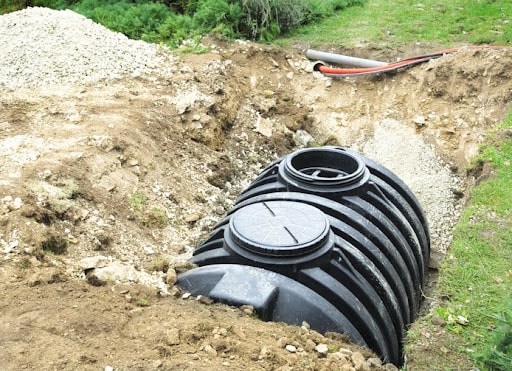 Save Money
Save Money
Septic tank pumping costs a few hundred dollars every three to five years, a bargain compared to the thousands of dollars it can cost to repair or replace a malfunctioning septic system. Regularly pumping your tank also helps you avoid repair costs associated with plumbing backups.
Protect Your Property Value
A poorly functioning septic system is a red flag for potential buyers and can decrease the overall value of your property. You might even face costly legal liabilities if your poorly maintained septic system becomes unusable. On the other hand, having your tank pumped regularly ensures you avoid any potential problems that could negatively impact your property and its value.
Prevent Groundwater Contamination
When a septic tank becomes too full, it can cause wastewater to overflow and clog the drain field, preventing proper filtration. This can lead to groundwater contamination, a serious hazard that could threaten your family and neighbors’ health. Improper sewage treatment spreads disease, from eye and ear infections to gastrointestinal illnesses to hepatitis. Regular septic tank pumping removes this threat by ensuring the tank never becomes too full.
Protect the Environment
Septic tank cleaning also protects the environment by preventing pollution of nearby waterways. When a septic tank overflows, untreated wastewater doesn’t stay contained in the drain field. Instead, it seeps into local rivers, lakes, and streams, causing harm to aquatic life and contaminating drinking water sources for people in the area. Regular septic pumping can prevent this by keeping the system functioning smoothly and properly treating all wastewater.
Avoid Drain Backups
Backed-up drains and slow toilets are common in poorly maintained septic systems. These plumbing problems are major inconveniences and may lead to costly repairs. Keep your drains flowing smoothly with regularly scheduled septic tank pumping.
Prevent Foul Plumbing Odors
A full septic tank produces toxic sulfuric odors, causing a rotten egg smell to emit from your drains. If the stench intensifies when you step outside and approach the septic tank, you can assume raw sewage has escaped. Prevent these scenarios by keeping up with septic tank pumping every few years.
If it’s time to maintain your septic tank, turn to Trinity Liquid Waste for a job well done. We offer septic tank pumping, septic inspections, and septic repairs for residential and commercial customers in the San Francisco Bay Area. Our goal is to help you maintain a safe, effective, and affordable septic system using our preventative services. With over 25 years of experience, we’re confident we can fulfill all your septic system needs! Contact us at 510-874-6489 to schedule services with us today.
Benefits of Water Jetting Service
Have you noticed slow-draining sinks, showers, and floor drains in your home or business? Do multiple drains clog at once or give off foul-smelling odors? These are just a few signs of clogged plumbing and septic systems caused by cooking grease, soap scum, hair buildup, and invasive tree roots. You have a few options for clearing the blockage, including plungers and augers. However, water jetting is the most effective option for cutting through the deepest, most stubborn clogs.
Water jetting, also known as hydro-jetting, is an excellent way to rid your drains of buildup that slows wastewater flow. This pipe cleaning method involves shooting a high-pressure stream of water into your pipes at around 35,000 psi. At this pressure, not even tree roots stand a chance!
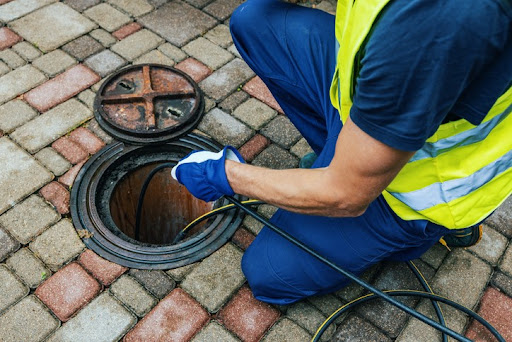
If you’re searching for the best pipe residue removal technique, consider five benefits of water jetting service to help you decide if it’s right for your Pleasanton home or business.
- Eco-friendly pipe cleaning: Is doing your part for the environment important to you? Skip the chemical drain cleaners and schedule water jetting instead! This technology doesn’t require harsh or toxic chemicals—just high-pressure water aimed into your pipes. This means you don’t have to worry about contaminating the soil, groundwater, or nearby lakes, rivers, and streams just because you want your drains cleared.
- Safe residue removal: Pipe cleaning chemicals don’t just harm the environment—their corrosive nature can also damage your pipes, especially if used repeatedly. Water jetting is safe as long as your pipes don’t have pre-existing damage or fragility. Rest assured that your technician will verify the condition of your pipes before recommending hydro-jetting.
- Reduced risk of future blockages: Other residue removal methods simply punch a hole through the blockage, leaving waste clinging to the sides of your pipes. In contrast, water jetting removes all traces of grime, returning your pipes to like-new condition. With no lingering debris to stick to, waste flows steadily down the drain, and clogs take longer to reform.
- Quick and efficient service: It takes a surprisingly short time to hydro-jet your plumbing or septic system compared to other pipe cleaning methods. If the drains in your commercial building require cleaning, expect only the briefest interruption to your normal daily operations. Residential water jetting takes even less time.
- Affordable drain clearing method: With no need to break through drywall or open up your pipes, hydro-jetting remains highly affordable. You’ll also save money on future repairs and service calls by having your plumbing cleared as thoroughly as possible.
Trinity Liquid Waste is the company to call for water jetting service in Pleasanton, CA. We use state-of-the-art jetting equipment to dislodge waste deposits and flush your pipes, leaving them performing like new. With over 25 years of experience servicing residential and commercial plumbing and septic systems, you can trust our team to do a job well done! Contact us at 510-874-6489 today to learn more about the benefits of water jetting or to schedule a visit.
What to Expect from Professional Water Jetting Services?
If the pipes at your business are blocked or draining slowly, someone has probably recommended you get a high-pressure water jetting service, also known as hydro jetting services. If you’ve never had this service done, here’s what to expect.
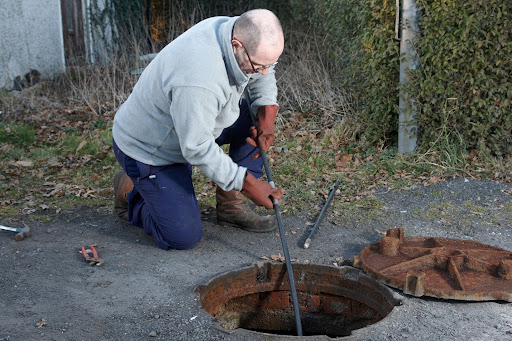 What is Hydro Jetting?
What is Hydro Jetting?
There are many ways to service a slow draining pipe. A chemical solvent such as Drano or Liquid Plumr can be used, but the chemicals can damage your pipes or the environment. An electric plumber’s snake (also known as an auger) can be used, but it can get stuck in the pipe, or lead to injury when it recoils.
The water jetting process involves a high-pressure hose with special nozzles. Like the snake, it gets inserted into the pipe to break up the clog, but it’s less likely to cause damage or get stuck. If one hose attachment doesn’t clear the clog, there are a number of other kinds that may be used. Typically, they spray a high-pressure beam of water straight ahead, with additional streams that spray in all directions. It’s even strong enough to pulverize small roots, and blast them out of the pipe as well. It can break up and remove old grease that has congealed, along with hair and other debris.
Another advantage of hydro jetting over plumbing snakes is that the high-pressure water shooting in all directions is more likely to expel soft obstructions instead of merely breaking them up. This gets rid of odor-causing materials. And it doesn’t pose the health or ecological risks that chemical cleaners do. One minor drawback of hydro jetting is that it can’t be used where there’s a flooding risk, such as a basement or crawlspace.
As Part of Maintenance Routine
Hydro jetting isn’t only used for blockages. They can also be used to keep your pipes clear of debris. This keeps your plumbing working efficiently and means that major plumbing work will be less necessary in the future. If your plumbing involves a lot of grease, hair, dirt or other troublesome materials, you might want to have your pipes hydro jetted every year or so.
Don’t let a slow or stopped drain affect your staff’s or customers’ ability to work and use the bathroom or kitchen. Trinity Liquid Waste has your clogged pipes covered with quick and affordable water jetting throughout the Bay Area. We provide 24/7, same-day service to ensure we clear your pipes as soon as possible. You can always count on us to respond quickly and determine the best service for your drains’ or septic system’s needs. Contact us today to learn more about hydro-jetting for your drains or schedule service at your location.
We also offer septic pumping and septic inspections to residential and commercial customers in the Pleasanton, CA, area. Drawing on over 25 years of experience, we have the knowledge and skills needed to keep your septic system in good shape. Contact us at 510-874-6489 to schedule services with us today.
Why You Need Regular Grease Trap Cleaning?
If you’ve worked in restaurants for a while, you know why it’s essential to keep grease traps clean. But for many people, this is a new subject. Here are a few reasons why grease trap cleaning services are so important.

Safety First
Grease traps that get too full endanger your indoor air quality. They’re also much more likely to catch fire compared to well-maintained traps. You can avoid these risks by having your grease trap regularly cleaned, for a safer work environment.
Unpleasant Odors
Many grease traps contain rotten materials that emit nasty odors. These smells can fill your establishment and make it an unpleasant environment for customers and workers. These rotting substances also pose health hazards, so cleaning your grease trap removes both the odors and the health risks.
Utility Issues
A clogged grease trap is not only smelly and dangerous. It creates functionality problems for your business. Drains need to work properly. Clogs cause waste materials to flow back up from your drains. Regular trap cleaning prevents this. Another thing to remember is that traps packed with grease are harder to clean. Well-maintained traps are much easier to clean, meaning the job will take less time.
Legal Risks
There are laws and regulations pertaining to grease spills. If your business is determined to be the cause of a grease spill, you can face legal consequences.
Financial Costs
Not only can you be fined for a grease violation, but your business can be shut down and your reputation can be harmed. This can cost you a lot of business. Another financial risk comes from repairs that may be needed if your grease traps and drains are damaged from lack of maintenance. When rotting food is left in a trap, it can create sulfuric acid, which can damage the walls of the trap. This can cause some components to fail and need to be replaced.
Trinity Liquid Waste has been a reliable plumbing source for commercial customers for 25 years. Our decades of plumbing and septic expertise encompass a wide array of services applying to various industries, including grease trap pumping. Whether you need daily pumping due to high volumes of grease, or you only need to empty your tank periodically, our team of technicians is ready to help you. We arrive on time for scheduled grease trap and tank maintenance and pumping and work quickly and efficiently to minimize any disruption to your business. We also offer septic pumping and septic inspections to residential and commercial customers in the Pleasanton, CA, area. Drawing on over 25 years of experience, we have the knowledge and skills needed to keep your septic system in good shape. Contact us at 510-874-6489 to schedule services with us today.
6 Benefits of Regular Septic Maintenance Service
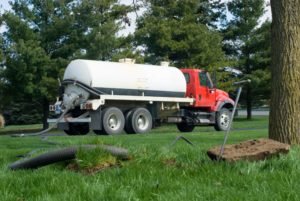
If you have a septic system, it’s important to keep on top of routine maintenance.Read more


